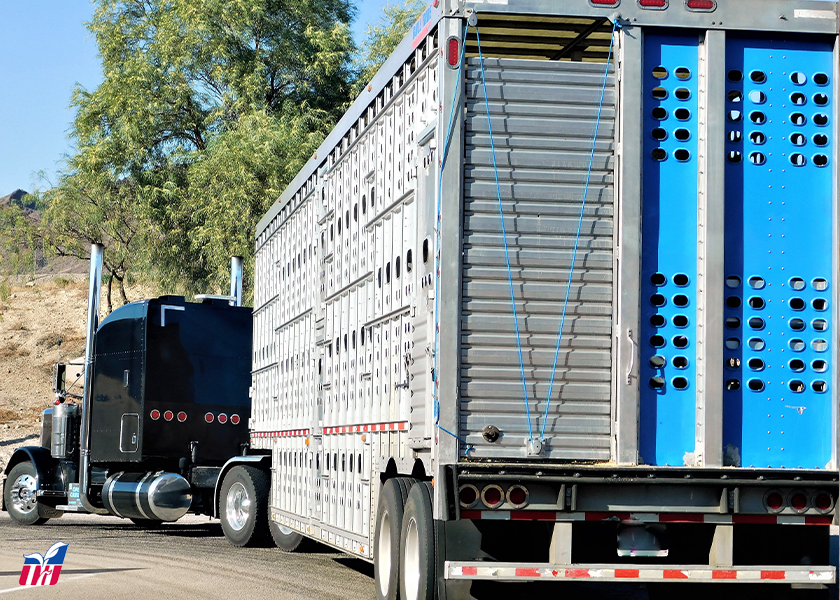Livestock Analysis | September 1, 2023

Price action: Nearby October lean hog futures ended the week at $83.05, up 50 cents on the day and $3.225 higher on the week.
5-day outlook: Although this week’s hog slaughter topped the reduced year-ago figure just before Labor Day by 0.8%, it seemingly indicated last week’s combination of aggressive packer operations and extreme heat reduced the numbers available to packers. Whether that translates into support next week is open to debate, especially since packer operations will be slowed by Monday’s Labor Day holiday. On the other hand, today’s $3.29 jump in pork cutout values, to $95.51, seems likely to prove supportive of cash and futures values. The fact that the rise was led by hams, picnics and ribs may imply significant staying power, as opposed to the huge swings often posted by pork bellies.
30-day outlook: Climbing retail beef prices and diminished costs for pork may prove quite supportive of the hog market during September. The 10-year average for the month is relatively flat, but a look at individual years shows a bifurcated month. That is, many years such as 2022 and 2021 see big September hog and pork losses, but some such as 2018, 2014 and 2013 have posted sizeable gains. The late-August price breakdown seemingly implies more of the same, but sometimes, such as 2002 and 2018, those led to major Labor Day lows and subsequent rebounds, with the September low marketing the bottom for the second half of the year. Thus, while sustained weakness seems most likely, renewed firmness can’t be ruled out.
90-day outlook: The fourth quarter is often marked by sustained seasonal weakness in hog and pork values. A portion of that weakness reflects the traditional fall surge in hog supplies, but consumer demand for most pork cuts, with the exception of hams, tends to considerable weakness at that time as well. The examples of extreme weakness seen the past two years imply similar losses again late this year. On the other hand, we suspect grocers have shifted their focus for weekly specials from beef to pork in response to the elevated cost of wholesale beef, whereas pork has been and remains comparatively cheap. Improved grocers features of pork during the coming months could limit the market’s downside potential. October and December hog futures are trading well above last year’s lows.
What to do: Get current with feed advice. Carry all production risk in the cash market for now.
Hedgers: Carry all risk in the cash market for now.
Feed needs: You should have all corn-for-feed and soymeal needs covered in the cash market through September.
5-day outlook: Weak prices in the western Corn Belt apparently translated into a $2.64 drop in the Monday-Thursday average, at $182.69, for the five-market area. That would seem to set the stage for more of the same next week, but we have to wonder if the active northern sales this week have cleared the way for a short-term rebound, especially if initial grocer buying for planned early-October features will spark a cash market rebound. Such strength might be aided by the wholesale market, which performed surprisingly well this week; it bounced from early-week losses and posting a midsession Friday quote for choice cutout just $2.50 under last Friday’s late-summer high.
30-day outlook: Cattle slaughter typically tends to decline from summer highs to early-autumn lows, before posting a post-Thanksgiving bounce. That happens despite the traditional boost to overall supplies as producers cull old, reduced-performance cows from their herds. Conversely, the focus of consumers and grocers also tends to shift from steaks to roasts as colder temperatures arrive. In recent years, cash cattle prices have usually dipped during September as a consequence. It’s certainly possible tight feedlot supplies will offer support, but we worry that record-high beef prices will stifle consumer demand and undercut the market.
90-day outlook: Greatly elevated retail beef prices and their potentially bearish demand implications represent a big concern for the fall outlook, although the 10-year average for steer prices implies an approximate $10.00 rally from late-September lows to end-of-the-year highs. As long as feedyard managers continue marketing their cattle in a timely manner, the market would seemingly hold significant upside potential. Whether the seasonal advance will live up to the gains implied by the October and December live cattle contracts is open to question.
What to do: Get current with feed advice. Carry all production risk in the cash market for now but be prepared for some hedge coverage as we have demand concerns.
Hedgers: Carry all risk in the cash market for now.
Feed needs: You should have all corn-for-feed and soymeal needs covered in the cash market through September.






